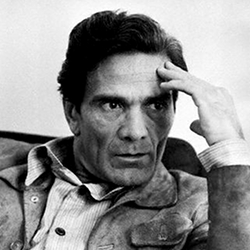
Los Angeles Film Festival Review: I.D. (2013)

Cast: Murari Kumar, Geetanjali Thapa
Director: Kamal K.M.
Country: India
Genre: Drama
Editor’s Notes: The following review is part of our coverage for the Los Angeles Film Festival. For more information on the festival visit http://www.lafilmfest.com/ and follow the Los Angeles Film Festival Festival on Twitter at @LAFilmFest.
I.D. is the debut feature by writer-director Kamal K.M, who is originally from Kerala but currently based in Mumbai. The film is also the debut production of the Collective Phase One organisation, of which Kamal is one of the founding members. Alongside other independent Indian films like Mumbai Diaries (2010, Kiran Rao), especially in terms of representations of the city in different ways that touch upon or turn over different issues in really exciting ways, I.D. is part of an incredible tide-change happening in Indian filmmaking. A very immersive, distinct, and suspenseful work that addresses questions of identity and anonymity, the big city, communications technologies, and procedure, I.D. is close to breathtaking and impressive.
Narratives that revolve around an individual in a major metropolitan city faced with a crisis of some kind, with the cell phone as the key tool of communication and source of suspense, are not new.
The film’s premise is a young woman, Charu (Geethanjali Thapa), who unexpectedly becomes involved in the life and identity of a man whom she does not know. When a painter (Murari Kumar, who should be familiar to Anurag Kashyap fans) in Charu’s apartment suddenly collapses, is taken to a hospital, and then dies, Charu is confronted with the non-identity of this man. Put another way, she is compelled to find out his identity, at the very least a name and family member to contact, in order to extricate herself from further hospital bills and responsibility. While preparing for an interview for a marketing position for multinational products and maintain a social life with her two roommates, Charu pursues doggedly any possible leads to the identity of the painter. Throughout her pursuit around the city of Mumbai, her cell phone is glued to her hand and her ear, either showing the photo of the deceased man to people who may be able to identify him or speaking on the phone related to her work or her own detective work.
 Narratives that revolve around an individual in a major metropolitan city faced with a crisis of some kind, with the cell phone as the key tool of communication and source of suspense, are not new. One thinks of films such as Cavite (2005, Ian Gamazon/Neill dela Llana) and, more recently, Graceland (2012, Ron Morales), both of which are set in Manila, or even Aamir (2008, Raj Kumar Gupta), which is an Indian remake of Cavite. I.D. provides a variation of such narratives that has arguably not been seen before. It takes the triangle of city, crisis, and cell phone not to point to larger issues such as terrorism (Cavite), sex trafficking (Graceland), and kidnappings, with the city portrayed as an irrevocable hotbed of violence and evil, but rather to explore the more fundamental, existential issues of identity, the individual, and daily modes of identification that confirm a person’s existence and state of being known. As weighty as they are, Kamal’s script and film allow these issues to bubble up to the surface of the spectator’s consciousness during Charu’s journey across Mumbai, instead of declaring them in the beginning and then elaborating them in a colour-by-numbers manner. In fact, I.D. is a gripping film because these issues are cloaked in detective-like, suspense clothes.
Narratives that revolve around an individual in a major metropolitan city faced with a crisis of some kind, with the cell phone as the key tool of communication and source of suspense, are not new. One thinks of films such as Cavite (2005, Ian Gamazon/Neill dela Llana) and, more recently, Graceland (2012, Ron Morales), both of which are set in Manila, or even Aamir (2008, Raj Kumar Gupta), which is an Indian remake of Cavite. I.D. provides a variation of such narratives that has arguably not been seen before. It takes the triangle of city, crisis, and cell phone not to point to larger issues such as terrorism (Cavite), sex trafficking (Graceland), and kidnappings, with the city portrayed as an irrevocable hotbed of violence and evil, but rather to explore the more fundamental, existential issues of identity, the individual, and daily modes of identification that confirm a person’s existence and state of being known. As weighty as they are, Kamal’s script and film allow these issues to bubble up to the surface of the spectator’s consciousness during Charu’s journey across Mumbai, instead of declaring them in the beginning and then elaborating them in a colour-by-numbers manner. In fact, I.D. is a gripping film because these issues are cloaked in detective-like, suspense clothes.
The film’s kinetic energy helps to make it gripping, with the camerawork mobile and very active to parallel Charu’s movements.
The film’s kinetic energy helps to make it gripping, with the camerawork mobile and very active to parallel Charu’s movements. Charu is constantly climbing up or down stairs, using various modes of transportation to get from one place to another in her pursuit of this man’s identity (by foot, by train, by taxi, or by tricycle), and always changing course whenever someone new points her to a possible lead in the painter’s identity, in conjunction with her cell phone serving as an extra limb. From the very beginning, in fact, the film establishes Charu’s perspective of the bustling city from her apartment terrace as she has a phone conversation, not revealing her face at first but the camera sticking closely to her body while one hears her voice. Through her, the spectator feels Mumbai the city as a living, breathing creature down to one’s bones, moving from the verticality of high-rise apartment neighbourhoods to the horizontality of the slum quarters. The issue of class thus also surfaces along the way, although the situation of hiring someone to paint over a spot in the wall already elaborates, ever so subtly and early on, class difference and privilege.
As Charu’s search for the painter’s identity becomes a trance-like obsession and encompasses an increasing circumference of geography in Mumbai, the film becomes exhausting and overwhelming towards the end. The act of showing the photo of the man that she took when she identified his body at the morgue with her cellphone and asking people if they have seen him and where, only to be continually pointed elsewhere to other people, becomes tiresome and repetitive, although perhaps that is the point. For the process is like experiencing the immensity and population of Mumbai, a trial-by-fire of sorts for Charu, who has been in Mumbai only for two months.
Other aspects that overwhelm Charu contribute to this idea of immersing the spectator in the life-pulse of Mumbai, such as Charu’s roommate’s birthday party in their apartment, which occurs the same day that the painter collapsed and is hospitalised (Charu footing the bill) and where she experiences a fit of wooziness, or being at the police station and experiencing the stubbornness of procedure to state what happened and her particular involvement in it even though she does not know the man.
The film’s cast is absolutely terrific, with the weight and draw of the drama on Thapa’s shoulders. In fact, in some cases, in the slum area, she holds one of the cameras to provide one-on-one conversations between Charu and the slum inhabitants and views of the area, further adding a corporeal dimension to the film.
Related Posts
![]()
Rowena Santos Aquino
![]()
Latest posts by Rowena Santos Aquino (see all)



























